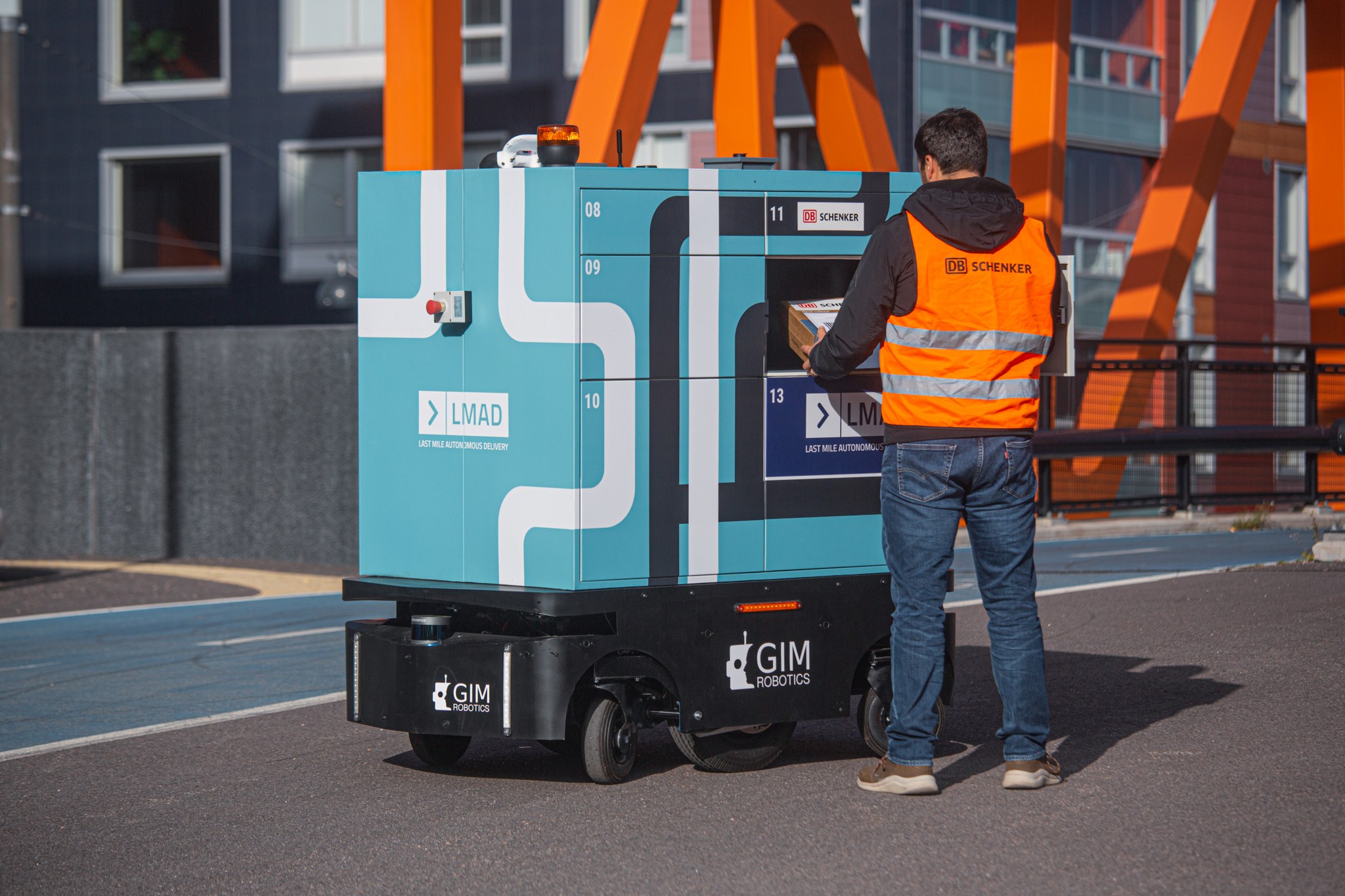The LMAD project piloted an autonomous delivery robot in Helsinki and Paris.
The LMAD project included building a robot, a fleet management system that enables autonomous mobility and an order system that allows the robot to communicate with customers. In addition to the technical implementation, a service concept was created by means of co-creation and service design and tested in a genuine urban environment with genuine customers.
Objective
The goal was to learn about the potential of delivery robots in open environments.
Duration, partners and funding
- The project was carried out in 2019–2022.
- It was funded by EIT Digital.
- The project partners were EIT Digital France and EIT Digital Finland, Futurice, Gim Robotics, BookIt, Picom, Bestmile and Forum Virium Helsinki.
The role of Forum Virium Helsinki
Forum Virium Helsinki supported the implementation of the pilots in Helsinki. Its role was to find suitable pilot sites and partners and also to give the consortium insight on the autonomous vehicle legislation in Finland.
The main results of the project
The LMAD project gathered information related to the national legislation of autonomous logistics robots and enabled a delivery robot to operate for the first time in a real urban environment in Helsinki.
There were two pilots in the project. In the first pilot in 2020, the LMAD robot transported B2B deliveries using the Baana corridor. In the pilot organised in 2021, the delivery robot was a pick-up point for parcels of DB Schenker in the Jätkäsaari area.
The project also gathered information on residents’ attitudes towards autonomous robots operating on the streets of Helsinki.
Project benefits to Helsinki
The LMAD project gathered information on the national legislation regarding autonomous logistics robots and thus enabled the first real-life pilots of delivery robots in the City of Helsinki.
The LMAD project collected information on the opportunities and challenges that a dense urban area like Helsinki’s inner city poses for the operation of delivery robots. The project indicated in what kind of environments and conditions it is possible to use delivery robots and how they can be used to meet the last mile challenges. The project gathered information on residents’ attitudes towards autonomous robots.
The preliminary work carried out by the project has increased the understanding of the requirements for the potential wider-scale introduction of autonomous solutions in Helsinki.


